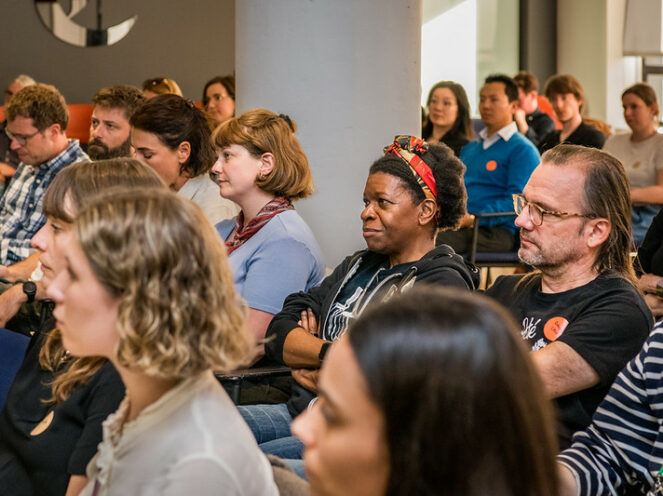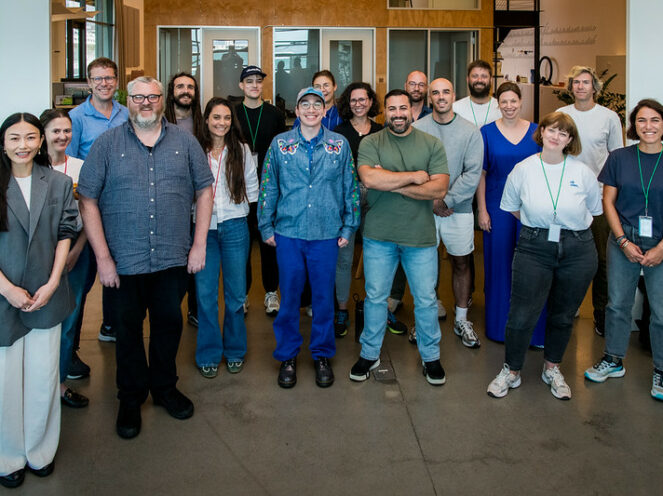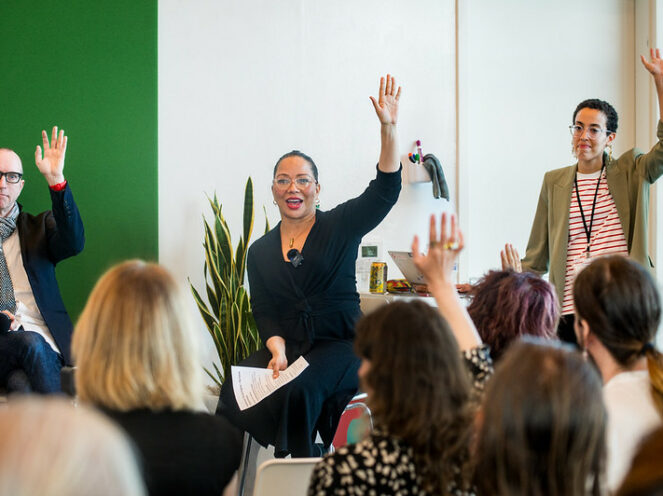
San Francisco – October 21, 2024
From August 12 until August 23, Swissnex in San Francisco hosted 10 journalists from Switzerland’s biggest media houses for its two-week Multimedia Lab for Journalists. Over the course of their two-week stay in the Bay Area, they took part in interactive workshops and connected with experts in the field of AI and multimedia storytelling.
A Two-Week Journey in Multimedia Innovation
The first week of the bootcamp was centered around the use of AI in journalism and storytelling, with workshops such as “From the Medium to the Message: The Shape of News in a Digital World” from the UC Berkeley School of Journalism, “AI & Journalism” – Kaveh Waddell & Patrick Swanson or “AI Video Making” – Matty Shimura, Eric Purcell & Gabe Michael. The first week was also rich in visits to UC Berkeley, KQED, and The San Francisco Chronicle, where our participants were able to exchange and learn with their peers.
The participants gained insights and answers from renowned experts, such as Jeremy Rue, Associate Dean and Associate Professor of Practice at the UC Berkeley Graduate School of Journalism, and Lowell Robinson, Senior Producer, Voice & AI at KQED. In the workshops, participants and experts exchanged ideas and debated approaches to multimedia storytelling.
Another highlight in the first week was the Public Event Mainstream Monotony – AI in Journalism & Storytelling on Thursday night. The event featured David Eagleman, Neuroscientist and Author at Neosensory, Manjula Nadkarni, CEO and Founder of Yuni, Tim O’Rourke, Vice-president of content strategy for Hearst Newspapers, Pierre Ballenegger, Senior Video Producer & Journalist at Blick, and Célia Heron, Deputy editor in chief at Le Temps and co-creator of the native podcast Brise Glace. The experts gave the participants and guests a glimpse into the future of multimedia storytelling and discussed the impact of artificial intelligence on creative work. Insights from the panel discussion: “The pace of innovation is incredible. Some of last week’s problems are no longer a problem today. We are looking at it as an opportunity but are cautious in integrating it”
Tim O’Rourke; “We had the same experience with computers now when you walk into a newsroom, you don’t see typewriters anymore”
Pierre Ballenegger.
In the second week of the Multimedia Lab for Journalists program, the topics focused on the power of Generative AI and other cutting-edge technologies to convey the participant’s stories and messages. Adina Renner (NZZ, Neue Zürcher Zeitung AG), one of the participants, remembers: “ The program mainly helped me understand how to talk about AI as a tool rather than a threat. I really liked the framing that AI is an eager, helpful intern, and I will carry this mindset back into my organization.”.
Experts like Douglas Edric Stanley, Maître d’enseignement at the Geneva University of Art & Design (HEAD-Genève), and Toshi Anders Hoo, Director of the Emerging Media Lab at the Institute for the Future, shared their perspectives and visions on how to use these technologies in journalism and multimedia storytelling.
A successful second iteration of the Program
Alicia Rieckhoff, Creative Industries Program Manager at Swissnex in San Francisco, was pleased with how the Multimedia Lab for Journalists Program went. “Something we really love here at Swissnex is creating long-lasting connections that will support and empower our participants way beyond our program.”
Benjamin Magnin, Commissioning Editor & Producer at SRF (Schweizer Radio und Fernsehen), said: “The program and my stay in SF have contributed to adopting elements of the California entrepreneurial mindset in general and for my project. In California, there’s a strong culture of learning, experimenting, and looking ahead with optimism. This attitude towards risk and failure, combined with a focus on continuous growth, has inspired me to approach challenges with a broader vision and a willingness to dream big. I want to take this mindset back to Switzerland, particularly the idea of ‘Embrace new technology, don’t fear it’ and help foster this approach within my own projects and professional environment. ”
The Multimedia Lab for Journalists program cohort consisted of Adina Renner, Benjamin Magnin, Célia Heron, Cyrill Pinto, Fabian Hock, Geraldine Normand Jacot, Harry Stitzel, Hugo Savary, Mirja Gabathuler, and Pierre Ballenegger.
If you’re interested in participating in similar programs in the future, sign up for our newsletter to receive information about similar programs.
-
![The image shows a group of individuals seated around a table during a workshop or meeting. They are focused on discussions or presentations, with some taking notes, using laptops, or checking their phones. The table is cluttered with laptops, notebooks, markers, water bottles, and other office supplies, indicating an active and collaborative environment. The background reveals a bright room with large windows, suggesting a modern, open setting.]()
Hear from the 2024 program participants








